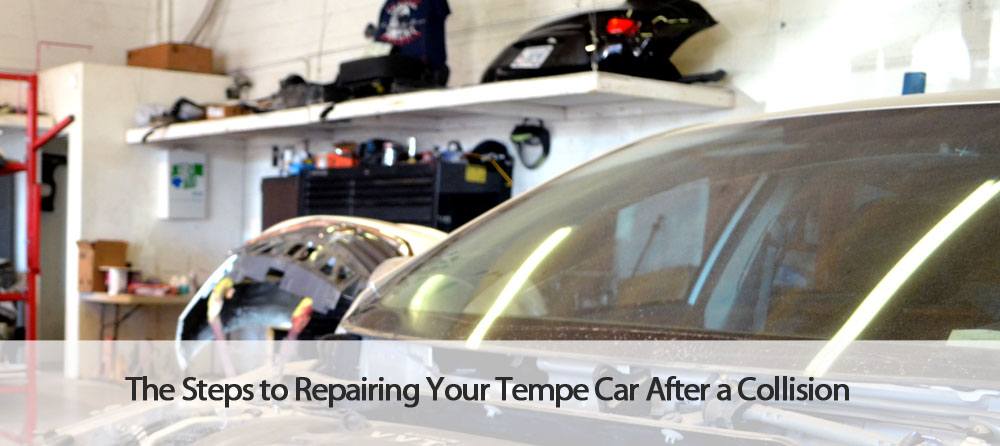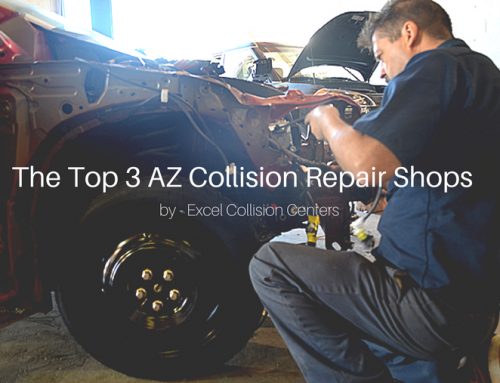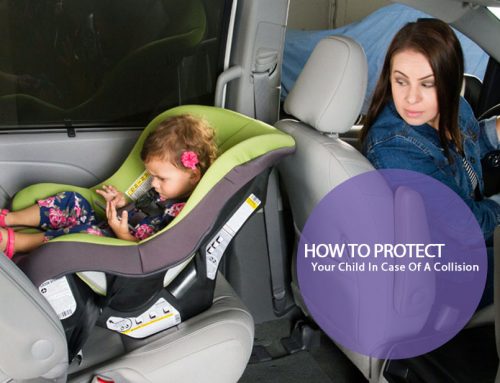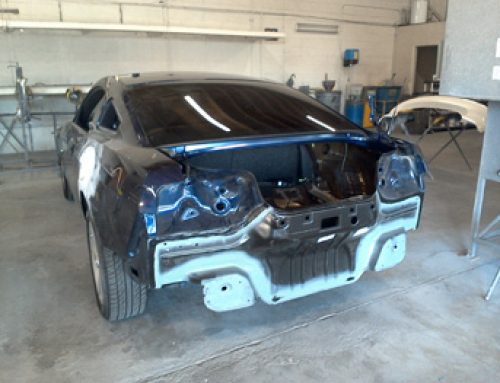The Steps to Repairing Your Tempe Car After a Collision
The first step in collision repair will be choosing which Tempe body shop to use. Don’t choose according to who has the biggest advertisement, seek recommendations from co-workers, family and friends. Some questions you may want to ask the body shop owner might include; what kind of guarantee does your work come with? Are you insured for theft and fire?
Obtaining Estimates
Insurance companies usually require you to obtain two or three estimates from different Tempe body shops. If you find that the estimate from the auto body shop you prefer is higher than others you can always bring in the other estimates and ask if they will price match, but don’t go by price alone, if the price seems way too low it probably means you will get subpar work. In order to provide an estimate for your collision repair the body shop will observe which parts have been damaged and note the cost of those parts. Some Tempe body shops use a computer program to enter this information and the program then compiles a preliminary estimate.

It is a preliminary estimate because there is often hidden damage that can’t be observed until the vehicle has been disassembled. The auto body technician who disassembles your car will then revise the estimate to include the cost of repairing the additional damages found. After the estimate has been completed it will be reviewed by your insurance company. If the damage is extensive your insurance company may determine that the vehicle is not repairable and declare it a total loss. If the car is deemed repairable and the estimate is authorized by both you and your insurance company, then the collision repairs can begin. The estimate should cover all repairs necessary to bring your car back to its pre-collision condition. How long the repairs take will depend on how extensive the damage to your vehicle is. Most insurance companies will cover the cost of a rental vehicle while yours is being repaired.
Beginning the Actual Collision Repair
Aside from damaged body parts there may also be structural damage. Years ago cars had frames that all other parts including the engine were bolted to. Today, nearly all cars have unibody construction, meaning their frame and bodywork have been integrated into one another, although many collision repair shops still refer to structural damage as frame damage.
If there is structural damage, the first step will be to put your car on a frame rack. The auto body technician will have ordered the parts needed, but they cannot begin the collision repair until all of the structural parts have arrived. Frame straightening requires up to date frame repair equipment and a properly trained frame repair technician in order to return the unitized auto body to factory condition. Frame straightening is another area where computer programs are used to analyze your vehicle’s frame in order to ensure a precise repair.
Preparing to Paint
Next comes the exterior body repair where sheet metal is installed, aligned and finished. This is followed by paint preparation, which is one of those unseen job that requires time and skill. This is an important step before priming and sealing the panels. It is impossible to obtain a good paint job without proper preparation.
Painting
The auto body technician will find the paint codes that instruct how the paint is to be mixed for a proper match. An experienced auto body painter will also know how to match the paint color to the rest of the vehicle, even if the Tempe sun has faded the original color. Have you ever seen a car where one part of it, let’s say the hood, just doesn’t look quite right even though the color is pretty much the same as the rest of the vehicle? That’s what an experienced auto body painter knows how to avoid. Having parts of your car where the paint just doesn’t quite match the rest of the vehicle is poor quality work and will reduce the value of your car.
The paint is applied in a climate controlled paint booth. There are several stages to painting. First the base coat is applied. This paint is the color of your car and usually requires several coats. The base color is followed by several coats of the clear coat finish, which is what makes your car shiny. When the painting process is finished the final steps of reassembly can be done, such as applying moldings.
Finishing Touches
After all bodywork has been completed the car will be thoroughly detailed. All overspray should be removed and the car should be buffed and waxed until it shines. A final inspection will be performed to ensure that your car has been restored to pre-accident condition. Every area that has been repaired will be examined closely and the vehicle will be test driven. There should be no trouble lights showing on the dash such as “check engine” or “air bag”. The power locks, power windows and stereo should also be tested.

Picking up Your Car
When it’s time to pick up your car, you should examine it closely and notify the shop of anything you are not happy with. Do not pay for the repairs if you are not satisfied with the work. When you are satisfied, the body shop will go over the bill and any other necessary paperwork and you can drive away.
Excel Collision Centers
Did you know that only about 15% of Tempe body shops are factory approved collision repair centers? Excel Collision Centers is proud to be among that 15% of shops that have the most up to date equipment, tools and factory trained technicians to restore your car to pre-accident condition. We are so confident of the quality of our work that we provide a lifetime warranty on all repairs to be free of defects in workmanship for as long as you own your car. Call us today!
Published By:
 Excel Collision and Glass Centers – Tim Stone
Excel Collision and Glass Centers – Tim Stone
West Mesa
1135 S. Center Street
Mesa, AZ 85210
East Mesa
6343 E. Test Drive
Mesa, AZ 85206
Apache Junction Repair Facility
610 E. 39th Ave.
Apache Junction, AZ 85119
Apache Junction Satellite Location
3400 S. Tomahawk Road
Apache Junction, AZ 85119





